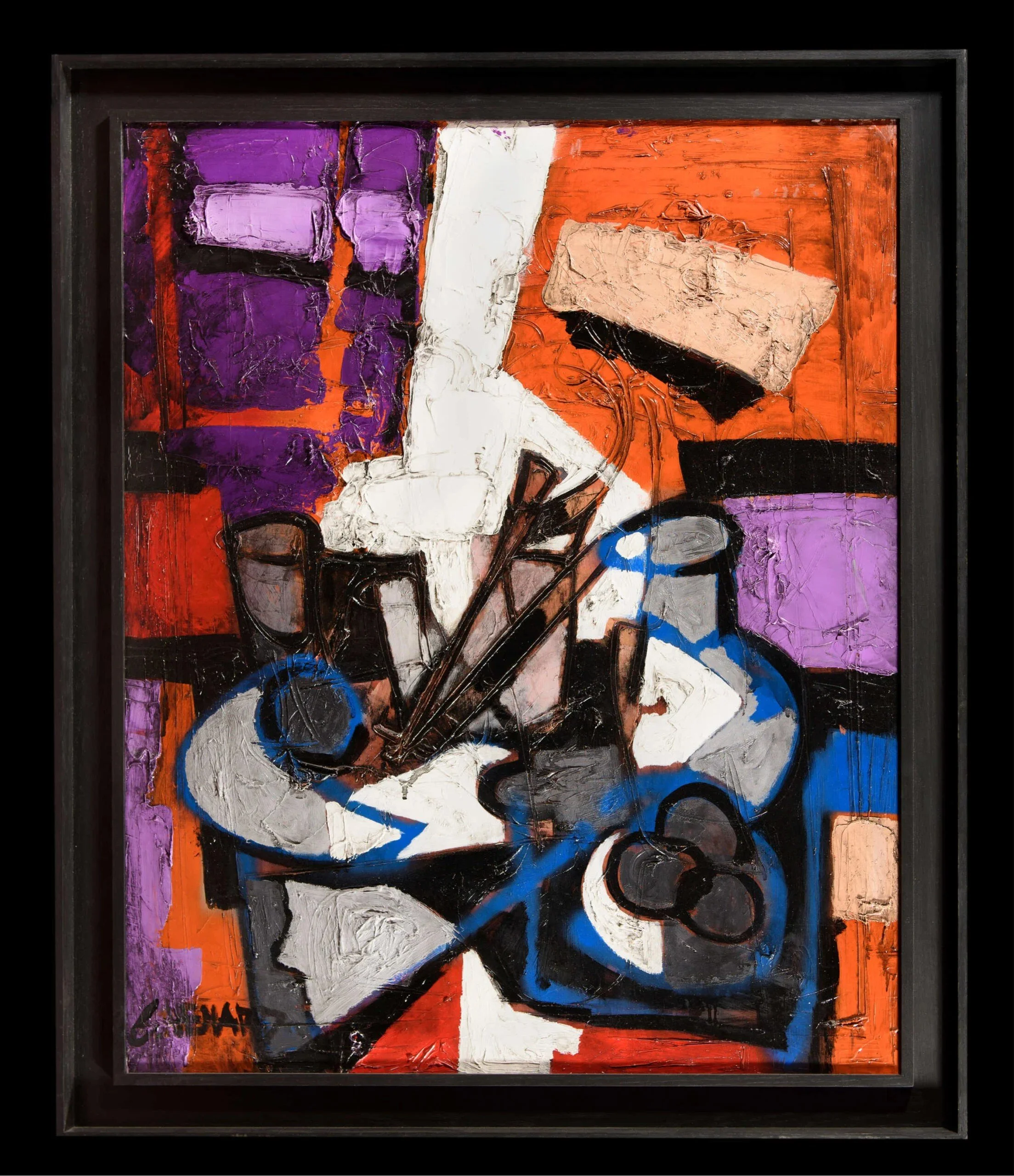La Table by Claude Venard


La Table by Claude Venard
Claude Venard is known for his powerful abstract compositions that explore the inner forces and underlying rhythms of subjects, rather than their outward appearance. This opens up the viewer to new perspective and way of looking by projecting spatial vistas into every part of the canvas, in accordance with an emotional rather than a physical order.
Venard’s optimistic attitude and obvious enjoyment of life imbues everyday objects and his views of Paris with an undeniably French joie de vivre. The artist said of his approach to his paintings “One must be wary of works that seduce at first sight; I do not mean that ugliness is a virtue, but a painting should be powerful without the use of trite devices.”
DIMENSIONS: (unframed) 39.4 x 31.9 in./ 100 x 81 cm (framed) 44.5 x 37 in./ 113 x 94 cm
SIGNATURE: Signed ‘Venard’ lower left
MEDIUM: Oil on canvas
Price: £31,000
Claude Venard (1913-1999), the French post-Cubist painter, is known for his powerful abstract compositions that explore the inner forces and underlying rhythms of subjects, rather than their outward appearance. This opens up the viewer to new perspective and way of looking by projecting spatial vistas into every part of the canvas, in accordance with an emotional rather than a physical order.
Venard’s optimistic attitude and obvious enjoyment of life imbues everyday objects and his views of Paris with an undeniably French joie de vivre. The artist said of his approach to his paintings “One must be wary of works that seduce at first sight; I do not mean that ugliness is a virtue, but a painting should be powerful without the use of trite devices.” Venard quickly established himself for his bold, heavily impasto technique, which through the 1950’s became even more abstracted
Provenance
Private Collection, France
Biography
Born in Paris in 1913, Venard started training as a painter at the age of 17 at the École des Arts Appliqués in Paris. Next he studied at the École des Beaux-Arts in Paris, but soon had to abandon his studies to earn a living as he began working as a picture restorer at the Louvre Museum, which is where the majority of his art education came from.
Venard began by favouring the traditional principles of craftsmanship, even participating in the first exhibition for the Forces Nouvelles group in 1936, also including artists like Pierre Tal-Coat and André Marchand. However, later on he would rebel against this style with members of the same group forging the aesthetic of the immediate post-war period of the École de Paris. Thus, following his service in the army after World War Two, Venard focused fully on his artistic career, and began utilising a wider colour palette. He continually participated in the acclaimed École de Paris group exhibitions at the Galerie Carpentier, along with helping found the revolutionary Salon de Mai in 1944 which played an essential role in promoting avant-garde abstract painters in Paris at the time.
He held numerous successful one man shows, including at the galleries Bernheim-Jeune in Paris in 1953, exhibitions in London at the Leicester Gallery, the Lefevre Gallery and he also became a regular exhibitor at American establishments like, The Fine Arts Association, the Knoedler Gallery and the Kleeman Gallery. Overall, Venard had a highly successful career until his death in 1999, becoming internationally renowned by showing in Chicago, Milan, Geneva, Tokyo, Munich, San Francisco, Copenhagen, Düsseldorf, Dallas, Buenos Aires, Philadelphia, Montreal, and practically all the capitals of Europe, and at the Venice Biennale in 1956.